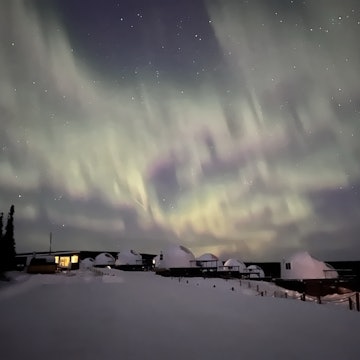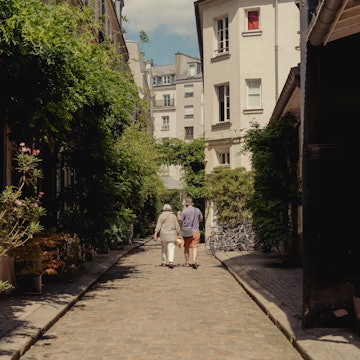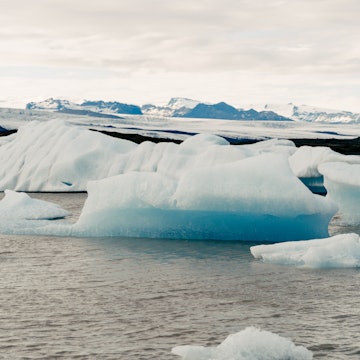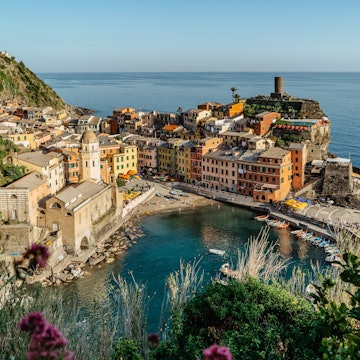
The best things to do around Vík and Iceland’s southeastern coast

Aug 12, 2025 • 10 min read

An aerial view of Seljalandsfoss waterfall, Southeast Iceland. Nick Nisperos/Shutterstock
If you’re setting off to circumnavigate Iceland’s famous Ring Road, you’ll drive right through the coastal village of Vík, happily located between major natural attractions in an exceptionally beautiful part of an exceptionally beautiful country.
To the west lie the basalt beach Reynisfjara, the rocky plateau Dyrhólaey, and the waterfalls Skógafoss and Seljalandsfoss. To the east, you’ll find the Eldhraun lava field (from the cataclysmic Laki eruption), and the gateway to Vatnajökull National Park at the Skaftafell oasis.
And the 200km-long (124-mile-long) leg between Kirkjubæjarklaustur (a 50-minute drive northeast of Vík) and Höfn is simply astonishing. You’ll pass vast deltas of gray glacial sand, marooned-looking farms, the toes of craggy mountains, surreal lava fields, crackling glacier tongues and ice-filled lagoons like Jökulsárlón. All along the coast, white-capped waves wash up on black sands, with cliffs that glow green from all the rain.
Whether you’re passing through on the Ring Road or planning a dedicated visit to this fantastic region, these are the best things to do in and around Vík and Iceland’s southeastern coast.
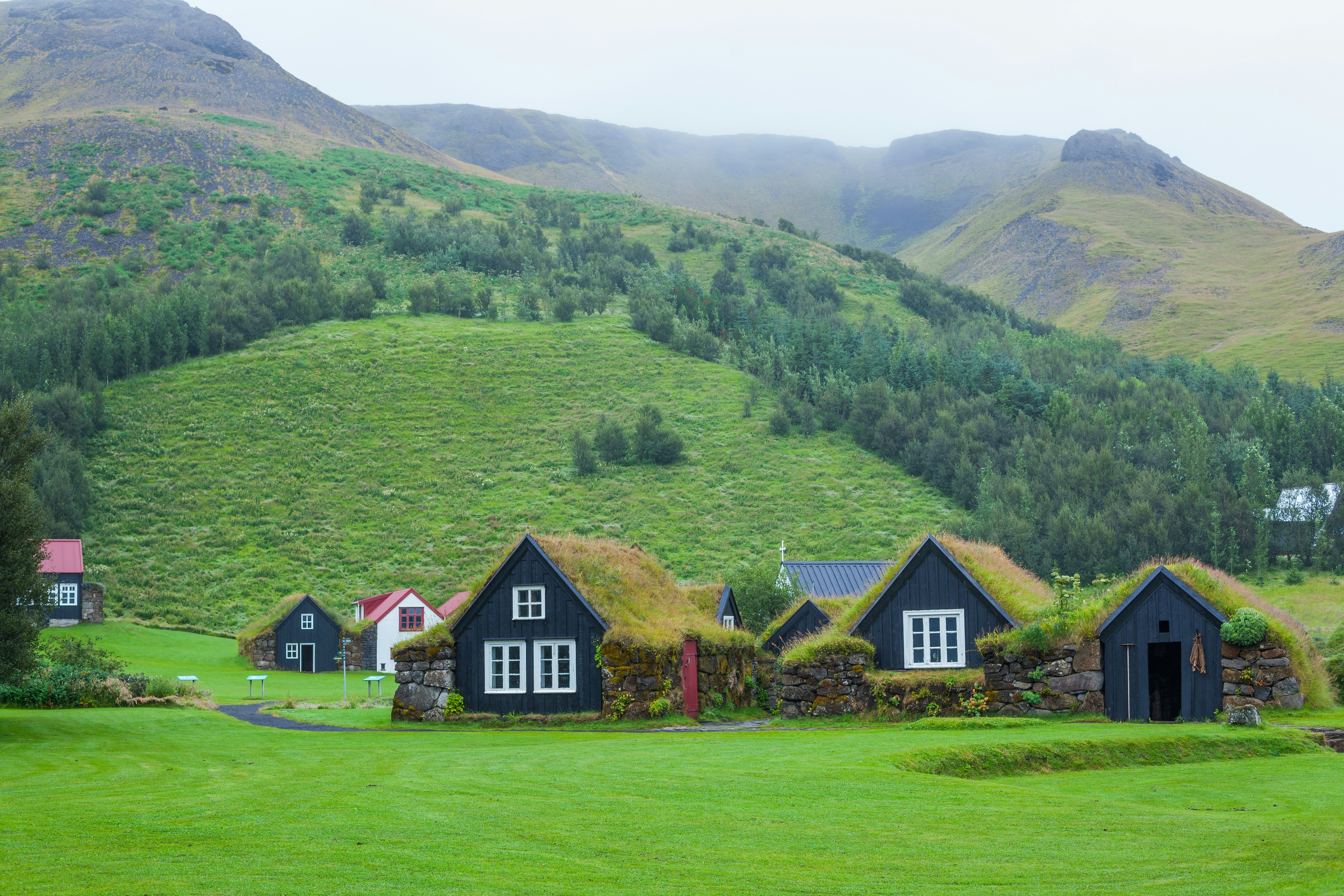
1. Slide back in time at the folksy Skógar Museum
At the southern edge of the glacier-covered volcano Eyjafjallajökull (whose 2010 eruption spewed ash that disrupted plane travel throughout Europe), the tiny village of Skógar is renowned for its namesake waterfall (see below). In summer, it’s a gateway to the majestic mountains and colorful valleys of the highlands, in Iceland’s rugged interior.
The culture of this rustic region is highlighted at the Skógar Museum, where visitors can wander through old turf houses, get up close to an old fishing boat and learn how transport across the vast, wild landscapes here has changed over the decades. There’s also a reconstructed elementary school from the early 1900s, and a small hydroelectric power plant from 1929.
Detour: The 25km (15.5-mile) mountain trail linking Skógar and Þórsmörk is a rewarding trek known as Fimmvörðuháls. Most hikers complete the trail within eight to 10 hours; pack wisely, and expect all four seasons over the course of the route.

2. Go chasing waterfalls
Iceland has thousands of waterfalls, with some of the most popular and impressive located between Hvolsvöllur and Vík. Seeing and hearing them roar is one of the best things to do in all of Iceland.
You’ll see the glistening 60m-high (197ft-high) Seljalandsfoss waterfall thundering off the lower escarpments of Eyjafjallajökull from miles away. A slippery path runs around the back of the cascade; we recommend a pair of sturdy boots and waterproof clothing. Some 500m (1640ft) further down, the humble Gljúfrabúi gushes into a hidden canyon. Access either by driving down the Þórsmörk Rd, or follow a walking path from (the paid) Seljalandsfoss parking area.
Skógafoss is another immediate sight on the Ring Road. In dramatic fashion, the 62m-high (203ft-high) waterfall topples over a rocky cliff at the western edge of Skógar. Climb the steep staircase alongside for giddy views, or walk to the falls’ foot, shrouded in sheets of mist and rainbows. Also at Skógar, you can walk behind delightful Kvernufoss, a somewhat hidden 20m (66ft) waterfall. The short trail to it starts at the far east of the Skógar Museum parking lot. Climb the stile over the fence and follow the walking path (roughly 15 minutes) towards the cliff.
Planning tip: Before, after or in between waterfall ogling, fuel up at one of Vík’s several appealing restaurants. Suður-Vík serves hearty fare in a warmly lit building with exposed beams and interesting artwork. Mia’s Country Van is a food truck cooking up fish and chips, perfect for a road-trip lunch. And Smiðjan Brugghús is Vík’s hippest brewery hangout, with 10 craft beers on tap, bar food and windows looking onto the brew room.
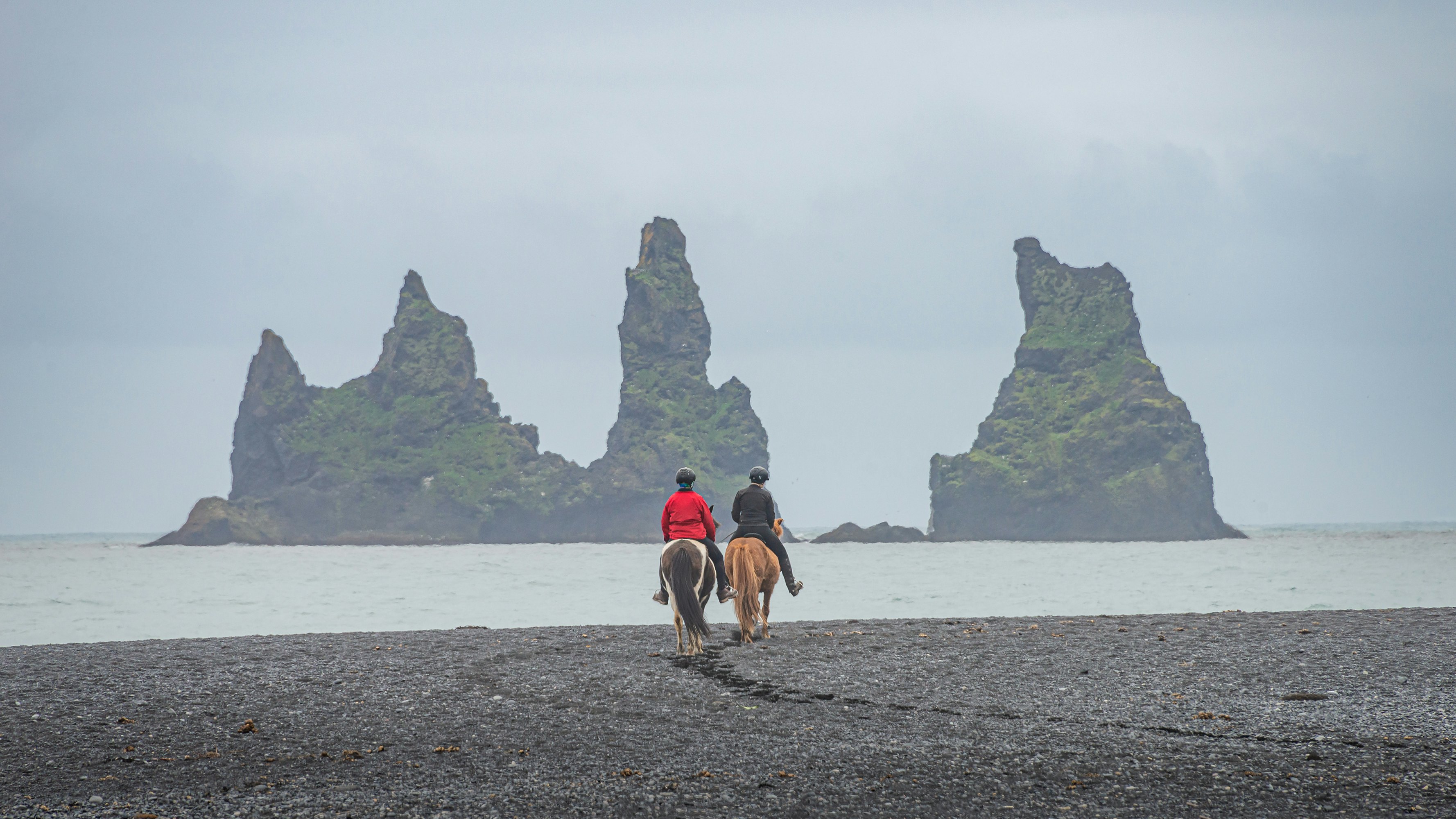
3. Take in the drama of black-sand beaches
Vík’s black-sand shore is dramatic from above and below. For the bird’s eye view, the sculptural peninsula of Dyrhólaey rises dramatically from the surrounding plain 10km (6.2 miles) west of Vík, offering amazing perspectives of waves crashing on black-sand beaches as many species of birds flit overhead. You’ll find a Viking Age connection at the cave Loftsalahellir (reached by a track just before the causeway to Dyrhólaey), which was used for council meetings in Saga times.
At the other end of the long black strip and closer to Vík, famous Reynisfjara beach is backed by an incredible stack of basalt columns resembling a magical church organ. Immediately offshore are the towering Reynisdrangur sea stacks: tradition says they are the mast of a ship that trolls were attempting to steal when they got caught in the sun. In Vík, a walk to the top of Reynisfjall ridge (340m) offers superb views. Watch out for rogue waves on the beach.
Planning tip: To ride horses along a black-sand beach is to feel wild and free. Head to Víkurfjara, the beach just alongside Vík town, where Vík Horse Adventure has a stable. Suitable for beginners, its half- and full-hour rides make it easy for just about anyone to tour this area with a four-legged guide.
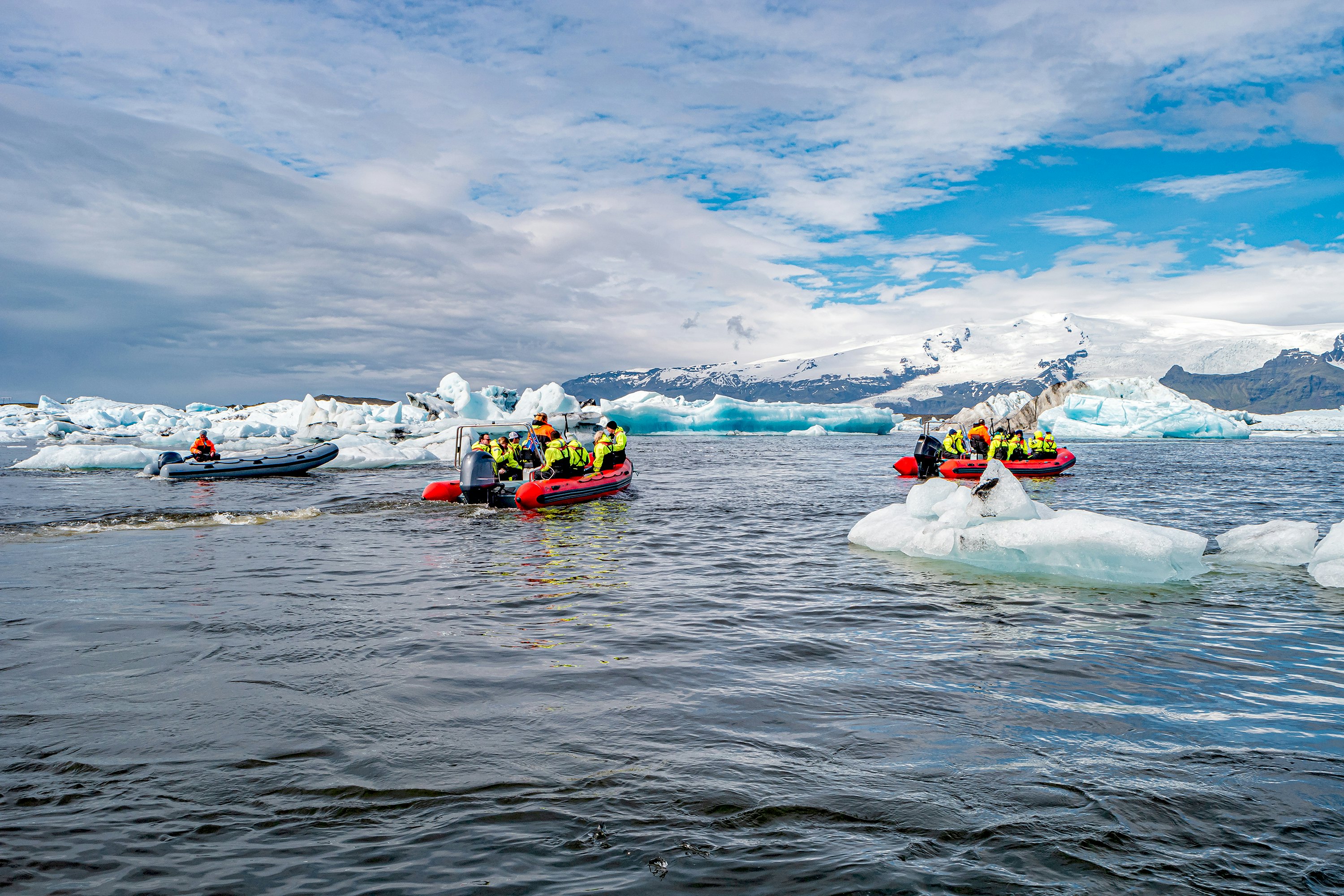
4. Dodge icebergs on the glacial lagoon of Jökulsárlón
Spectacular, luminous blue icebergs drift through Jökulsárlón glacier lagoon, which the Ring Road skirts 190km (118 miles) east of Vík. Just before they reach the sea, they strand themselves on the sandbanks of the massive lagoon, which was once entirely a glacier.
About a million people per year make the pilgrimage to visit this wonder; icebergs big and small line the lagoon’s southern end. Most visitors park by the Jökulsárbrú bridge, where the bergs are closest to shore. Yet a little further west, elevated paths give more peaceful panoramic views. (Keep an eye out for ringed seals.)
The minuscule Jökulsá river (it’s only about 500m/1640ft long) connects the lake to the sea. On the other side of the bridge, you’ll see why tourists have dubbed Fellsfjara “Diamond Beach”: ice boulders and bergs glitter photogenically on the black-sand beach as part of their final journey into the ocean.
Planning tip: You can get very close indeed to Jökulsárlón’s floating bergs on a boat tour. Glacier Lagoon offers 40-minute tours in an amphibious craft that trundles along the shore like a bus before splashing into the water. For double the price, a one-hour Zodiac tour will take you much closer to Breiðamerkurjökull, the glacier at the head of the lagoon from which the icebergs calve. Or explore the waters by kayak with Ice Guide, also departing from the main parking area.
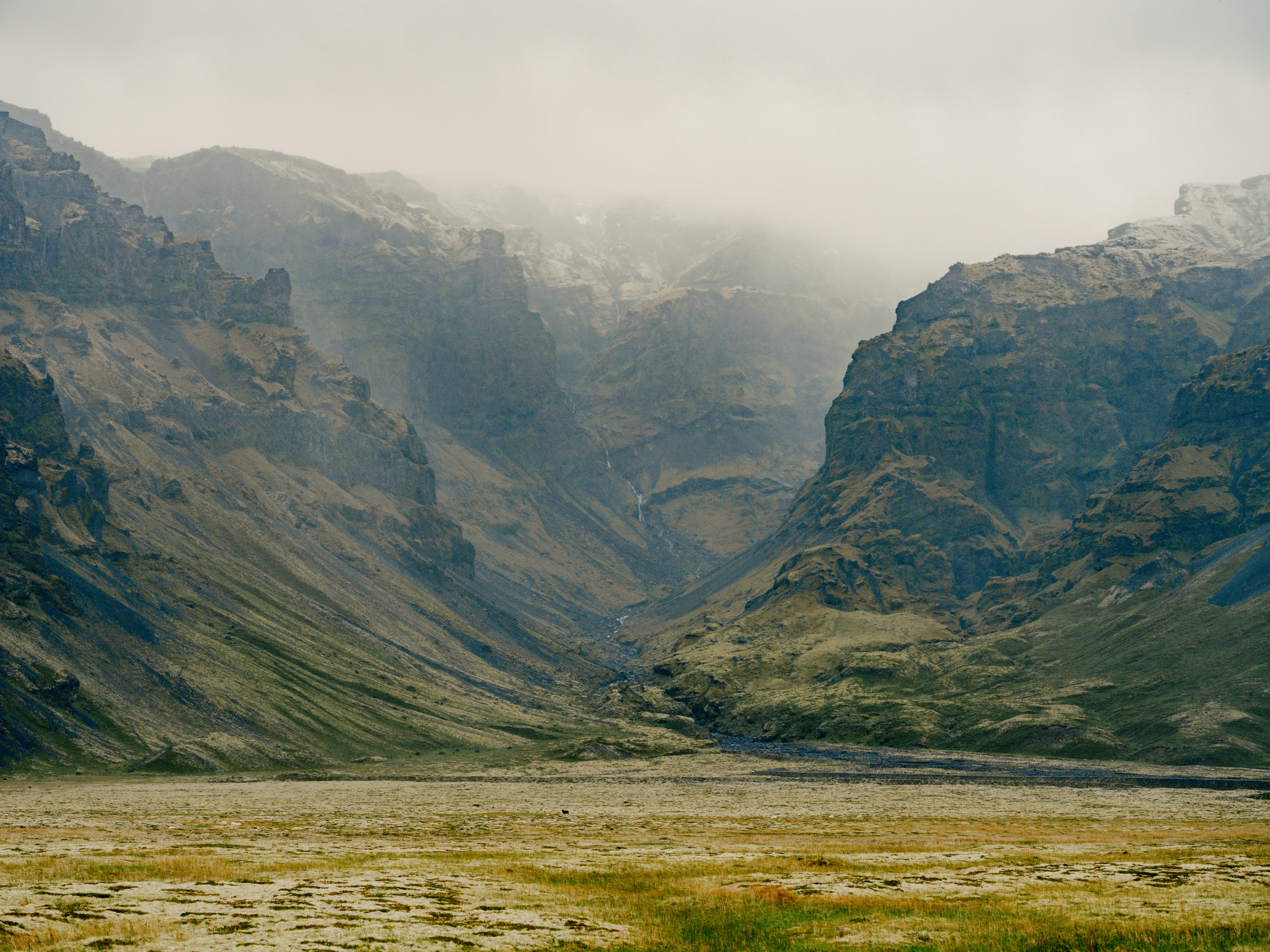
5. Enjoy the dazzling scenery at Skaftafell in Vatnajökull National Park
Fire meets ice at Vatnajökull National Park, where 10 active volcanoes lurk underneath a frozen cap that covers almost 15% of Iceland’s territory. The southern end of this UNESCO World Heritage Site, from Kirkjubæjarklaustur to Lónsöræfi, packs in great natural treasures, with outdoor action for all seasons.
The national park’s crown jewel, the Skaftafell wilderness area encompasses breathtaking peaks and glaciers. As you walk into a virgin birch-tree forest, temperatures drop the closer you get to the massive Vatnajökull glacier. The forest is a rare peek into what Iceland may have been like during the warm period that preceded the era of (human) settlement.
While Svartifoss is just the 20m (66ft) drop of a small stream, what it lacks in force is made up for by the spectacular basalt cliff that frames the waterfall so elegantly.
Planning tip: An easy 2-hour loop hike will take you past Svartifoss as well as Hundafoss and Magnúsarfoss, two other waterfalls, and to a wonderful viewing point at Sjónskeri. Expect many other hikers along the way.
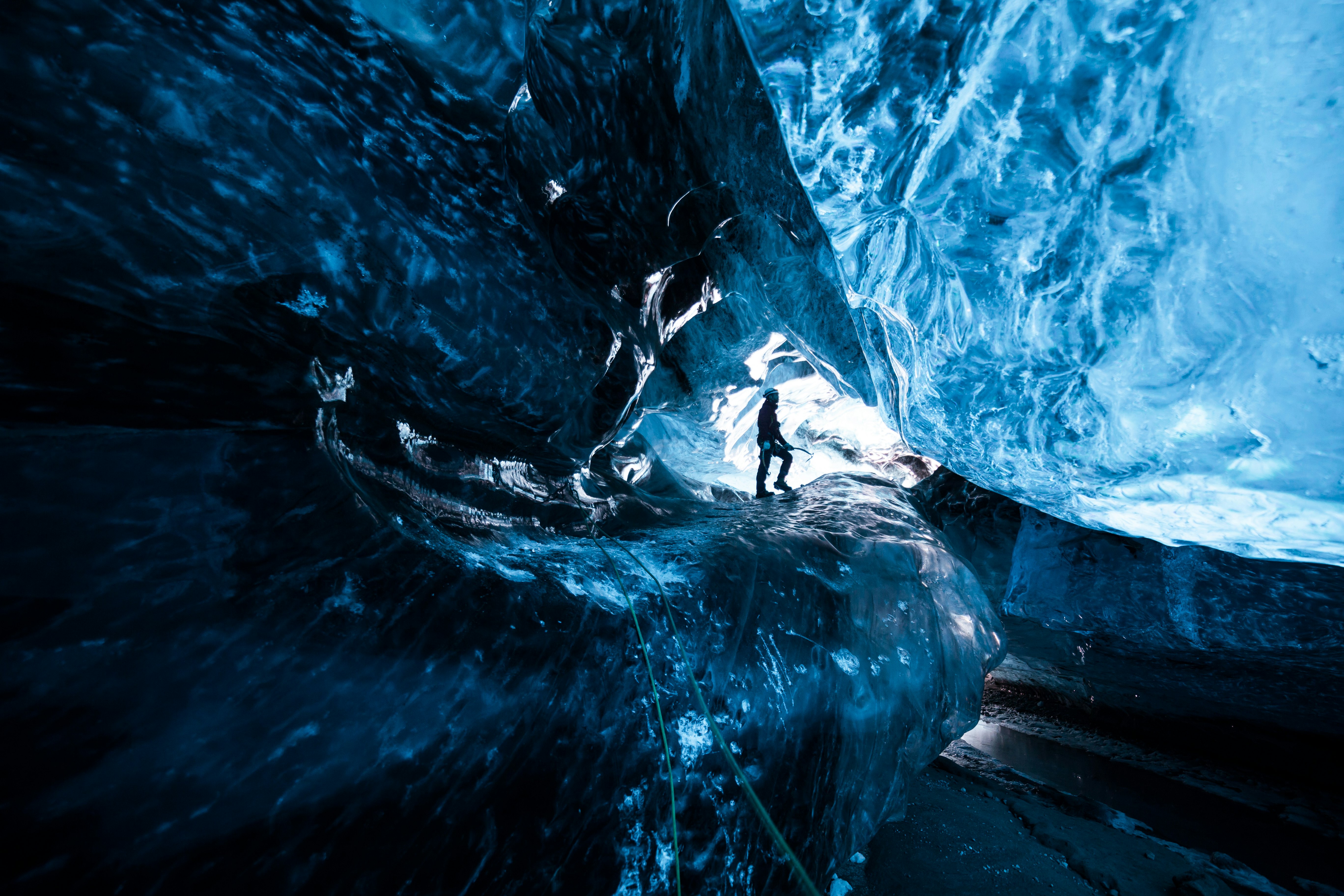
6. Hike on glaciers and explore ice caves
The highlight of a visit to Vatnajökull’s southern reaches is a glacier hike, a chance to learn the basics of glaciology in a thrilling, hands-on manner. Most tours take place on Falljökull (near Skaftafell) in summer and on Breiðamerkurjökull (near Jökulsárlón) in winter; tours last at least 2½ hours. Ice axe in hand and wearing massive crampons, you’ll be guided around cracks, streams and ponds that form on the glacier. The pace is slow with a modest level of difficulty – actually getting onto the glacier from the moraine can be steep.
Every winter in this part of Vatnajökull, guides drive massive super-Jeeps with limited seating to the foot of the glacier in search of a natural entrance. (The landscape changes every summer and is unsafe outside the frozen months from October to March.) The Sapphire Cave has been a common destination for the past few years, though each tour depends on weather conditions and available sunlight. Operators include Arctic Adventures and Local Guide of Vatnajökull, and their expertise commands a premium: expect to pay at least 35,000kr (US$285) per person.
Planning tip: Access to most of Vatnajökull’s glaciers is only for experienced folks equipped for a serious polar-style expedition, for the ice cap is cracked with deep crevasses, with sudden, violent blizzards frequent. Glacier Jeeps and Glacier Journey offer snowmobiling and super-Jeep tours; Glacier Jeeps runs guided glacier hikes, too.
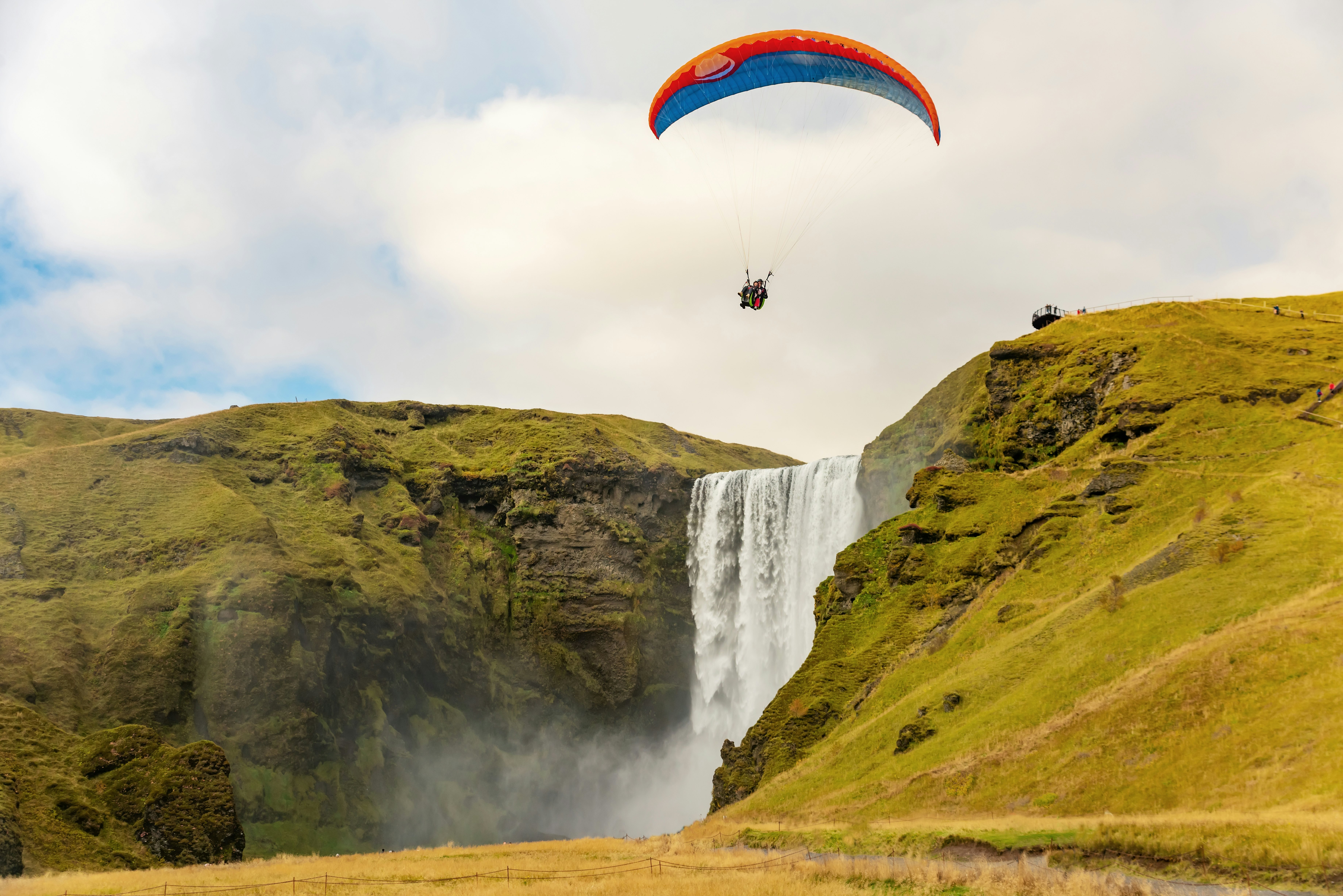
7. Admire all the stunning scenery from the air
There’s never a bad perspective on the otherworldly scenery of this wild region. So after you’ve driven across and hiked all over it, consider taking off to take it all in from above.
Atlantsflug offers helicopter rides that will take you over glacial outlets, canyons, mountains and even active volcanoes. Tours – which aren’t cheap but provide a once-in-a-lifetime experience – depart from tiny Skaftafell Airport, opposite the entrance to Vatnajökull National Park.
If you want a more active approach, Zipline Iceland in Vík lets you soar over a river canyon and epic South Icelandic valleys on four zip lines between 30m (98ft) and 240m (787ft) long. Or make like a puffin with True Adventure’s tandem paragliding outings. The scenery over this spectacular section of the South Iceland coast includes a bird’s-eye view of the Reynisdrangar basalt stacks.
Planning tip: Note that getting to Zipline Iceland’s starting platform requires a short car ride as well as a hike.
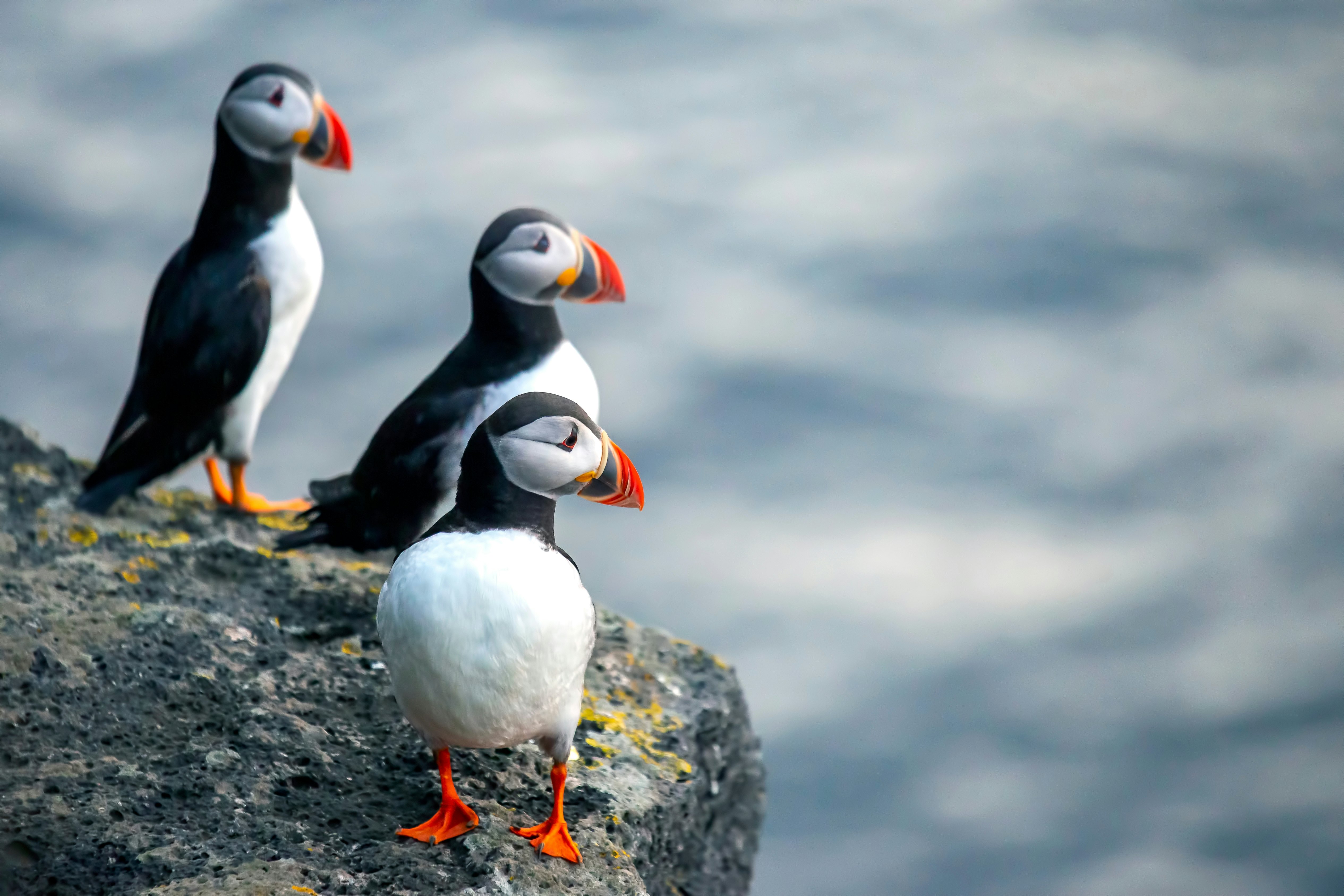
8. Spot puffins on Heimaey in the Vestmannaeyjar Islands
Of this chain of 15 islands, only Heimaey is inhabited. (Having erupted in 1973, Heimaey’s volcano, Eldfell, is very much active, with the ground on some spots of the island remaining hot enough to bake bread.) And the island is perhaps best known for its 10 million colorful, irresistible puffins.
During puffin season, from April to August (the prime month for chicks), head to Heimaey’s western coast or southern tip for top viewing points; the lookout near Stórhöfðaviti is one of the best. If you want a closer look, Ribsafari will take you close (but not too close) to puffin-nesting grounds in a speedboat (you may spot the occasional orca, too). Eyjatours combines puffin-spotting with a trip to Eldfell volcano and the farmstead where the island’s first Viking family settled.
Detour: Puffins and volcanoes aren’t the only attractions on Heimaey. The annual National Festival Þjóðhátíð draws some 17,000 visitors with music, dancing, fireworks, a big bonfire and a light display. And some travel here expressly for the sustainable gastronomy at internationally praised Slippurinn restaurant.
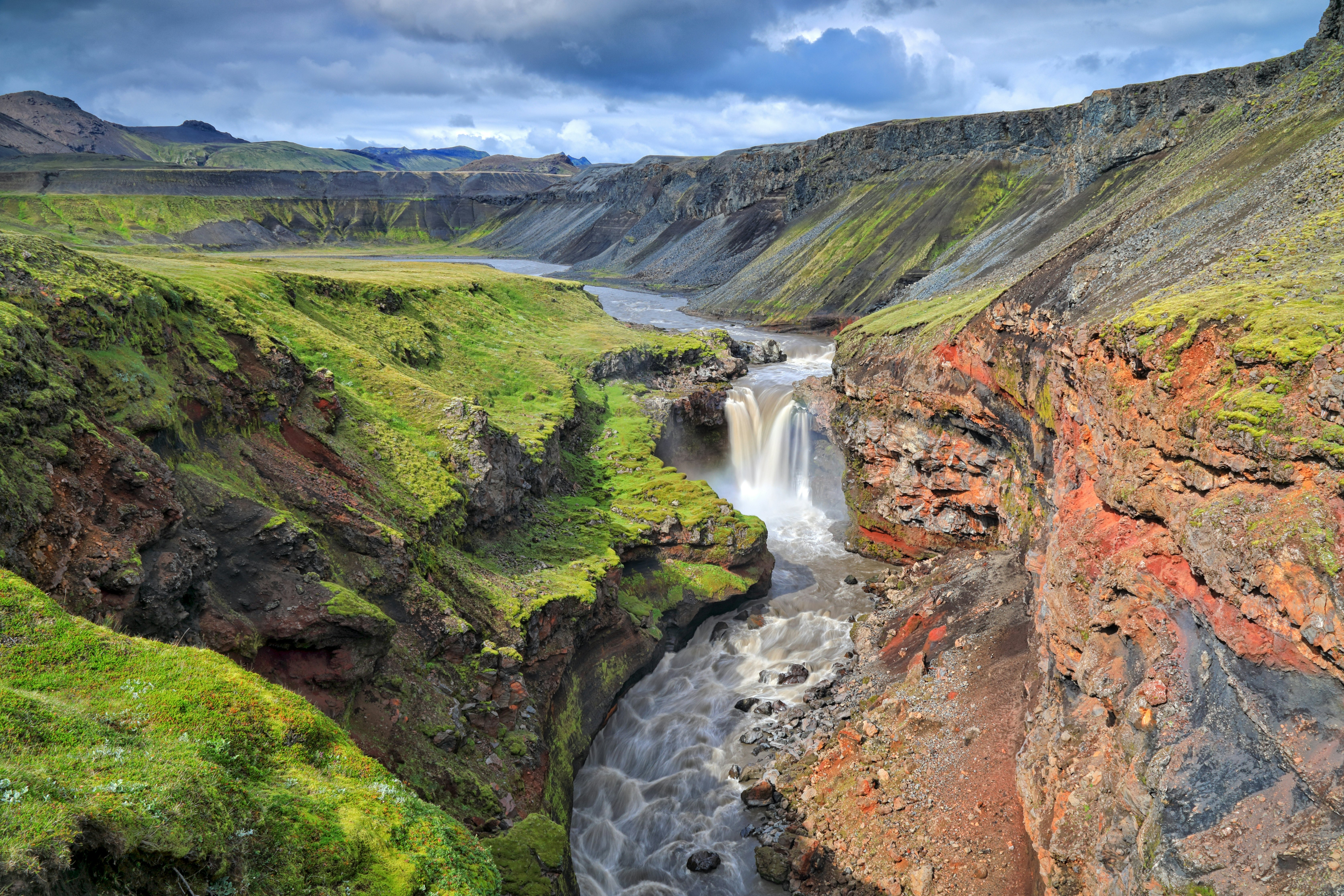
9. Tackle the multiday trek from Landmannalaugar to Þórsmörk
Stretching into Iceland’s remote and uninhabited highlands, the two- to five-day hike from Landmannalaugar to Þórsmörk is where backpackers earn their stripes in Iceland. Commonly known as Laugavegurinn (“Hot Spring Road”), the 55km (34-mile) hike passes wildly colored mountains, glaciers and glacier rivers.
Starting at Landmannalaugar, you can count on a (relatively) easy 12km (7.5-mile) leg to the first hut; the trail passes the boiling earth at Stórihver and sweeping fields of glittering obsidian. At Hrafntinnusker, try a couple of short local hikes without your pack before setting off; great views can be found at Söðull (20 minutes round trip) and Reykjafjöll (one hour round trip). Budget four to five hours for the next 12km/7.5-mile leg to Álftavatn (which has huts that sleep 72 people); along the way, you’ll see the looming ice caps of Tindafjallajökull, Mýrdalsjökull and the infamous Eyjafjallajökull.
Heading for the Emstrur huts, 15km (9.3 miles) from Álftavatn, don't miss the detour to spectacular Markarfljótsgljúfur, a gigantic multihued canyon. Then it’s another 15km on to Þórsmörk, where barrenness turns to brilliantly verdant lands dotted with lush Arctic flowers. Note that if you're not planning on staying in Þórsmörk, you'll need to arrive before the last bus leaves in the afternoon/evening.
Planning tip: As Iceland’s most popular hike, Laugavegurinn has sound infrastructure, with carefully positioned huts along the zigzagging route. Book huts months in advance, or count on camping.
This article was adapted from Lonely Planet’s Scandinavia guidebook, published in July 2025.







